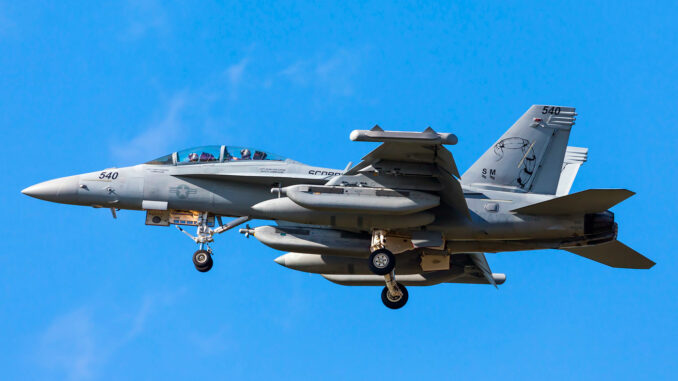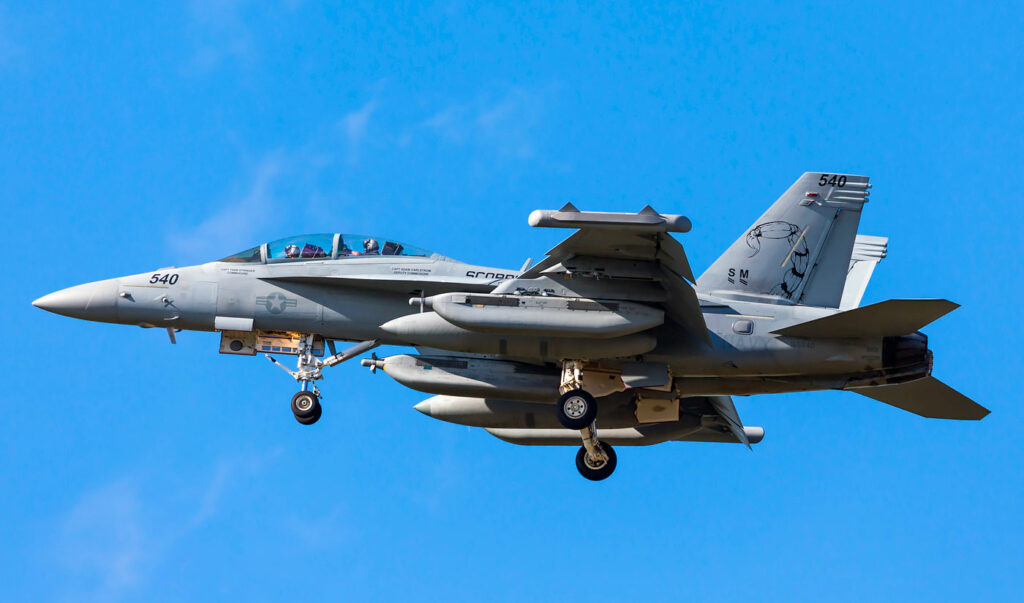
The RAAF reinforces its SEAD arsenal with 100 AGM-88G AARGM-ER missiles, increasing its ability to neutralize opposing air defenses.
In 2023, the Royal Australian Air Force (RAAF) significantly strengthened its suppression of enemy air defenses (SEAD) capabilities. The RAAF has received approval for the purchase of 100 AGM-88G AARGM-ER missiles, at a cost of $405 million, after having already acquired 15 AGM-88E2 missiles. These weapons systems are designed to neutralize enemy radars from a safe distance, thus protecting the Australian Air Force during combat operations. These strategic purchases are part of a defense policy aimed at strengthening Australia’s self-defense in a tense geopolitical context in the Western Pacific region.
RAAF SEAD capability ramp-up
Since 2022, the RAAF has taken significant steps to improve its Suppression of Adversary Air Defence (SEAD) capabilities. By equipping itself with AGM-88 anti-radar missiles, capable of neutralizing enemy radars, Australia is strengthening its arsenal to operate in heavily defended environments.
The AGM-88B/E missile, used by the RAAF’s 11 E/A-18G Growlers, is specifically designed to intercept radar emissions from enemy air defenses. This enables Australian aircraft to penetrate hostile airspace with minimal risk of destruction by defense systems. By 2022, the RAAF already possessed around 100 of these missiles, demonstrating a robust ability to neutralize enemy radars over vast distances. The initial cost of acquiring 15 AGM-88E2 ARRGMs was $94 million, or around €90 million.
These SEAD systems are crucial to maintaining air superiority in complex environments, where enemy defenses are both sophisticated and dangerous. The acquisition of new missile systems demonstrates Australia’s commitment to protecting its national interests and strengthening its influence in the Pacific region.

Acquisition of AGM-88G AARGM-ER missiles: a technological breakthrough
The acquisition of 63 AGM-88G AARGM-ER missiles in February 2023, at a cost of over $500 million (approx. 475 million euros), marks a significant step forward in Australia’s SEAD capability. Unlike its predecessors, the AGM-88G is designed to be integrated into the internal bunkers of the F-35A, which is also in service with the RAAF. This compatibility with the F-35A offers enhanced operational flexibility, enabling these stealth fighters to neutralize enemy radars while remaining invisible to enemy defense systems.
The AGM-88G represents state-of-the-art anti-radar technology. It is equipped with a millimetric active radar seeker, capable of tracking and destroying enemy radar transmitters at ranges of over 300 km. This range enables it to engage targets while remaining clear of immediate danger zones. What’s more, thanks to its ramjet propulsion, it can reach a maximum speed of Mach 4, making it one of the fastest anti-radar missiles in the world. This gives the Australian Army a long-range strike capability unrivalled in the region.
The introduction of the AGM-88G AARGM-ER therefore considerably strengthens Australia’s arsenal, increasing its ability to conduct offensive operations against enemy air defense systems with enhanced effectiveness and improved safety for pilots.
Strategic implications for Australia
The RAAF’s enhanced SEAD capability has important strategic implications for regional security and Australia’s geopolitical position. As a key U.S. ally in the Western Pacific region, Australia must maintain a robust air defense capability in the face of potential threats, including China and other regional powers.
Expanding SEAD’s arsenal with AGM-88G missiles enables Australia to play a more active role in multilateral defense operations in the region. In addition, it helps maintain an effective deterrent against any attempt to violate its air or sea space. The United States justifies these sales by emphasizing Australia’s importance as a strategic ally, and its commitment to helping strengthen the country’s defense capabilities.
The total cost of the recent SEAD missile purchases, estimated at over $900 million (around 850 million euros), reflects the importance of this modernization for Australian defense. Cooperation with American companies such as Northrop Grumman and Lockheed-Martin also underlines the depth of military relations between the two nations. This strengthens Australia’s ability to conduct large-scale operations in complex environments, while benefiting from cutting-edge technologies.
The role of the Ghost Bat UAV in SEAD operations
Alongside the acquisition of AGM-88G missiles, the RAAF is also investing in the development of autonomous UAVs to enhance its SEAD capabilities. The Ghost Bat project, developed by Boeing Australia, is a loyal wingman UAV capable of flying in tandem with manned fighters to accomplish a variety of missions, including suppression of enemy air defenses.
The Ghost Bat is designed to be flexible and capable of operating in the front line, detecting and engaging enemy radar systems. This is a strategic asset that could reduce the risk to pilots while increasing the strike capability of the Australian Air Force. The UAV has considerable autonomy and is capable of carrying a variety of payloads, including sensors and weapons for SEAD missions.
The development of the Ghost Bat is an essential part of Australia’s defense strategy, particularly in the face of evolving asymmetric threats in the Pacific region. As an autonomous force, the Ghost Bat could be used to carry out precise attacks against enemy targets, including radars, while minimizing the exposure of Australian pilots to opposing air defense systems.
War Wings Daily is an independant magazine.